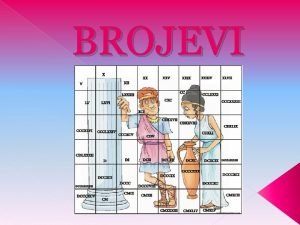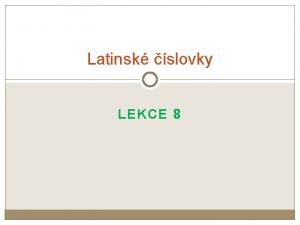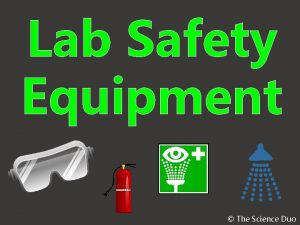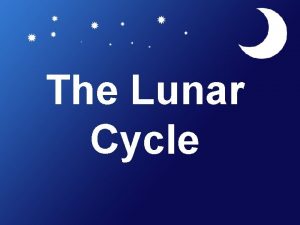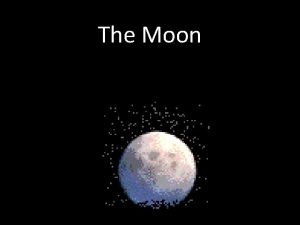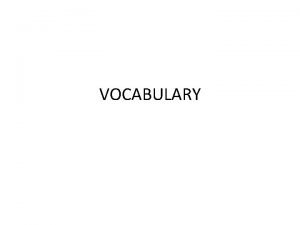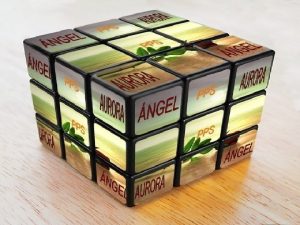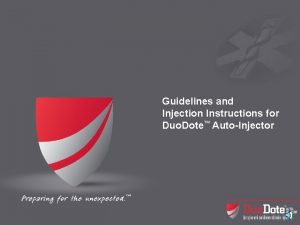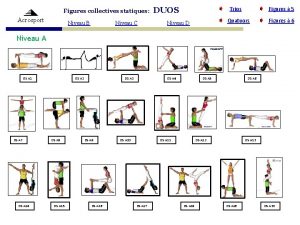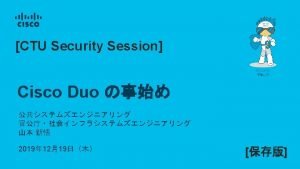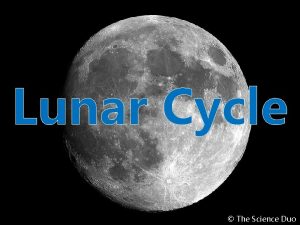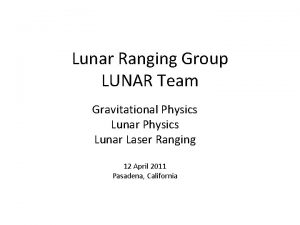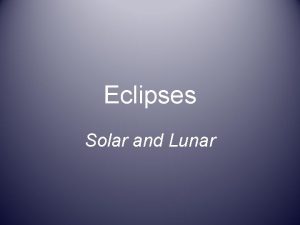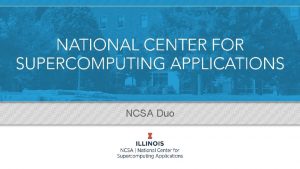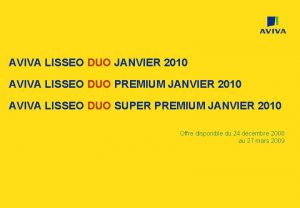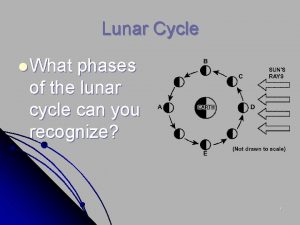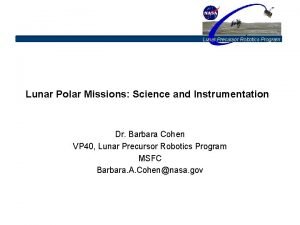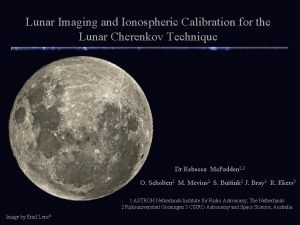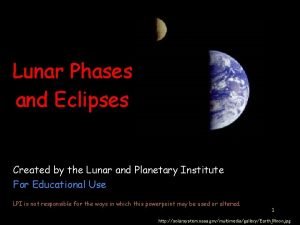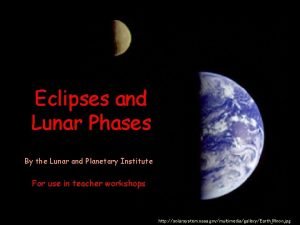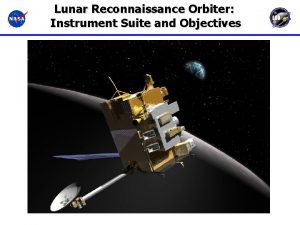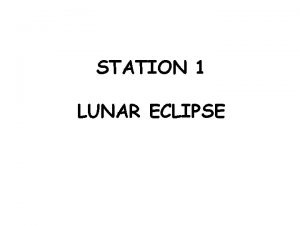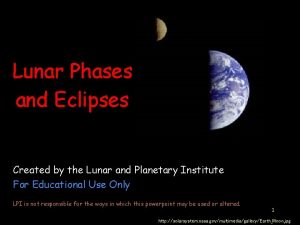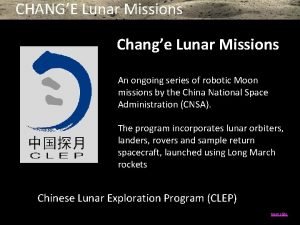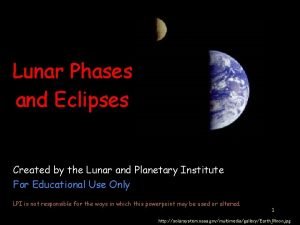Lunar Cycle The Science Duo Lunar Cycle The



















- Slides: 19

Lunar Cycle © The Science Duo

Lunar Cycle • The moon revolves around the Earth, it revolves counterclockwise. • The moon reflects of the light of the Sun. • The moon appears to change shape because only certain portions of its illuminated side are seen as the moon revolves around Earth, these shapes are called phases. • The lunar cycle (from new moon back to new moon) takes 29. 5 days

Moon Phases • There are 8 major moon phases • The same moon phase is seen by everyone on Earth • The first half of the lunar cycle the light reflected off of the moon’s surface appears to increase, this is called waxing. • The second half of the lunar cycle the light reflected off of the moon’s surface appears to decrease, this is called waning.

New Moon • No reflected light from the sun is visible • Occurs directly after a waning crescent, but before a waxing crescent

Waxing Crescent • Less than half of the moon is visible from Earth • The visible light appears on the right • Occurs directly after a new moon, but before a first quarter

First Quarter • Half of the moon is visible from Earth • The visible light appears on the right –looks like the letter D. • Occurs directly after a waxing crescent, but before a waxing gibbous

Waxing Gibbous • More than half of the moon is visible from Earth. Gibbous means humpback. • The visible light appears on the right • Occurs directly after a first quarter, but before a full moon

Full Moon • A full moon is fully visible (100% illuminated) as viewed from Earth • Marks the half way point of the lunar cycle • Occurs directly after a waxing gibbous, but before a waning gibbous

Waning Gibbous • More than half of the moon is visible from Earth • The visible light appears on the left • Occurs directly after a full moon, but before a third/last quarter

Third Quarter • Half of the moon is visible from Earth • The visible light appears on the left • Occurs directly after a waning gibbous, but before a waning crescent

Waning Crescent • Less than half of the moon is visible from Earth • The visible light appears on the left, looks like the letter C. • Occurs directly after a third/last quarter, but before a new moon

• Predicting the Each ¼ of the cycle takes about 7 days or 1 week to occur. Phases • If there was a New Moon on December 10 th, there would be a 1 st Quarter on December 17 th - about 7 days or 1 week later • To move 2 moon phases ahead takes about 7 days or 1 week • If there was a Waxing Crescent on August 7 th, there would be a Waxing Gibbous on August 14 th - about 7 days or 1 week later

Lunar Cycle Diagram 1 st Quarter Waxing Gibbous Waxing Crescent Full Moon New Moon Waning Gibbous Waning Crescent 3 rd Quarter

Checkpoint • 5 checkpoint questions • Discuss each question with a partner • Write a complete answer to each question on your notes page

Question 1 What causes the different phases of the moon as seen from Earth?

Question 2 What is the difference between a waxing moon and a waning moon?

Question 3 How much of the moon is visible from Earth during a new moon phase?

Question 4 If you observe a waxing crescent on rd February 3 , on what approximate date would you observe the next waxing

Question 5 If you observe a first quarter on th September 16 , on what date would you observe a full
 Svi rimski brojevi
Svi rimski brojevi Slovky
Slovky Latinské číslovky základní
Latinské číslovky základní Duoduo orchard
Duoduo orchard The science duo
The science duo The science duo
The science duo Lesson outline lesson 1 solids liquids and gases answer key
Lesson outline lesson 1 solids liquids and gases answer key Mathematics ____ my favorite subject
Mathematics ____ my favorite subject Waxing crescent moon tattoo
Waxing crescent moon tattoo Moon phases diagram
Moon phases diagram Zo root word
Zo root word Sfsu duo mobile qr code
Sfsu duo mobile qr code Hoy estamos festejando entra ya no tengas miedo
Hoy estamos festejando entra ya no tengas miedo Hen duo qian
Hen duo qian Duo dote
Duo dote Figure acrosport
Figure acrosport Days of the week in serbian
Days of the week in serbian Duo eindhoven
Duo eindhoven Duo cisco asa
Duo cisco asa Regionkalmar/tobaksfriduo
Regionkalmar/tobaksfriduo
